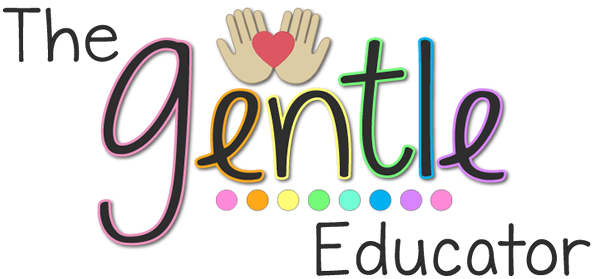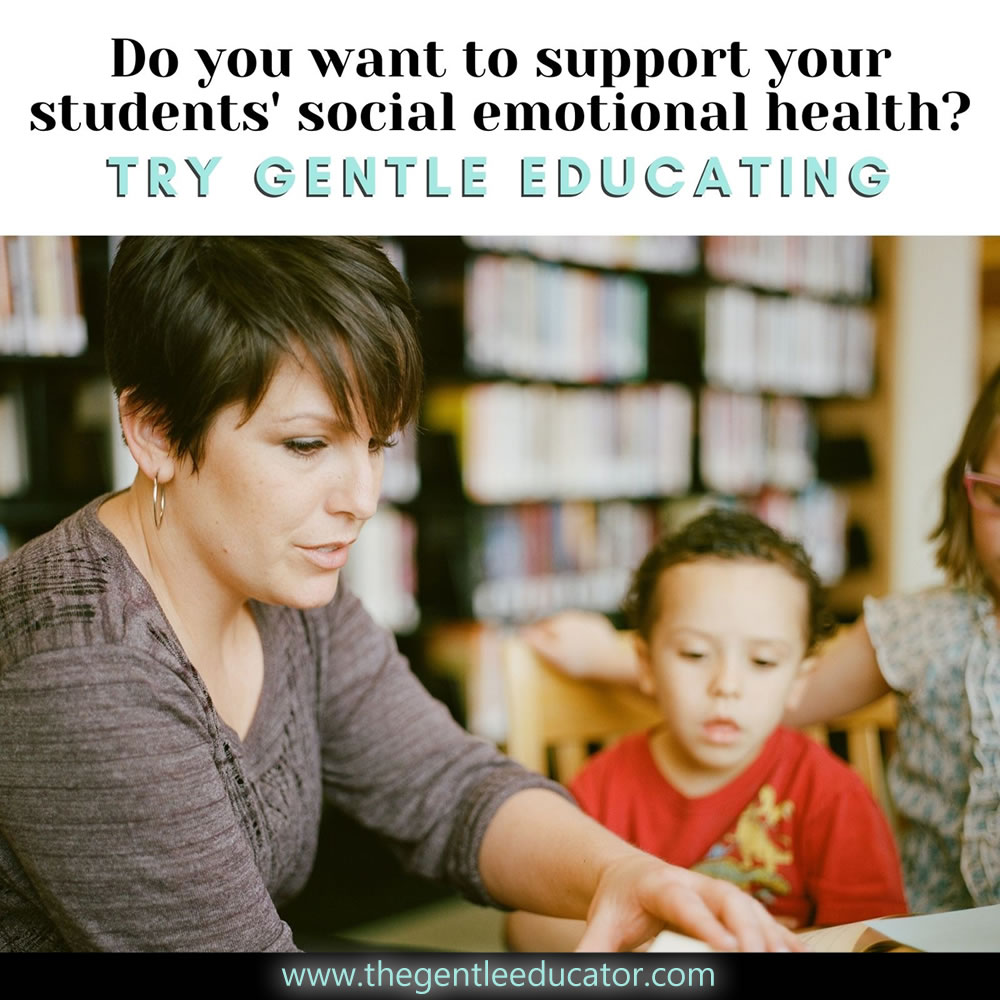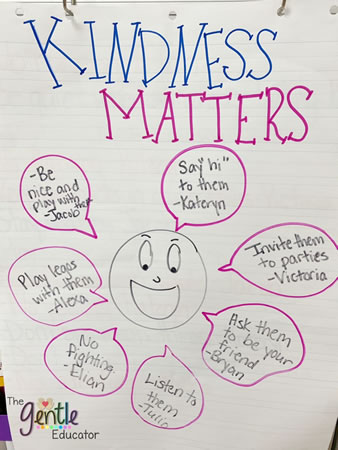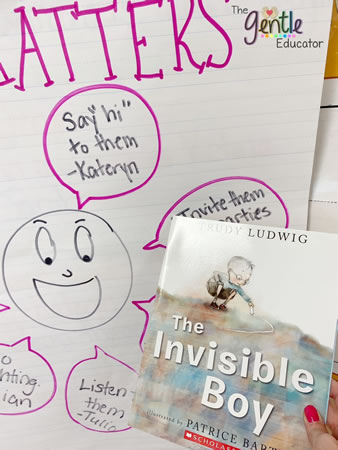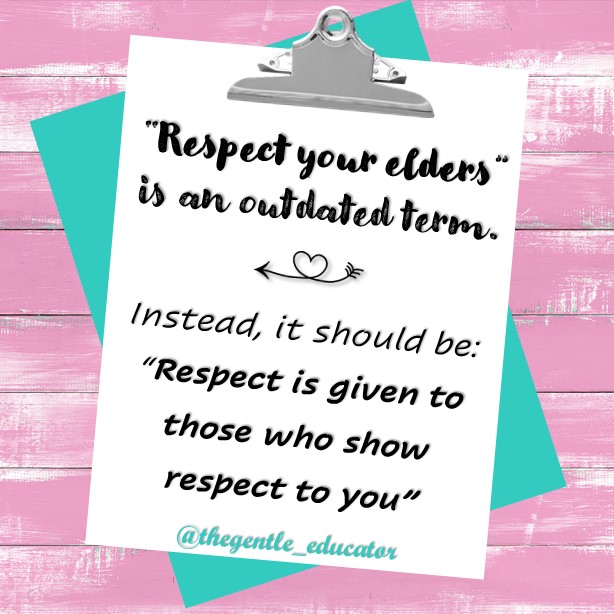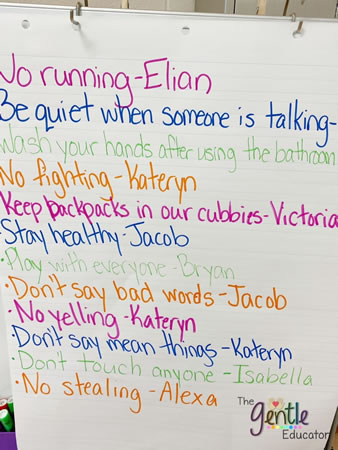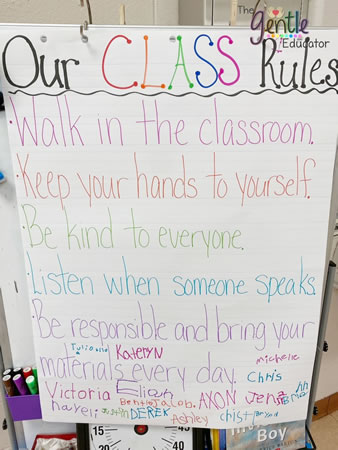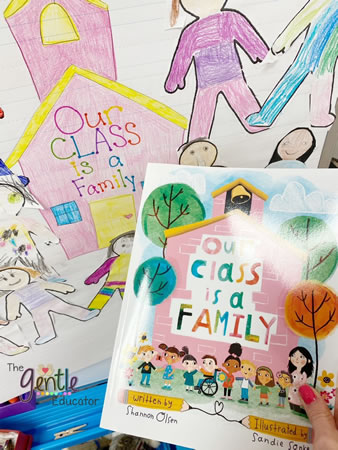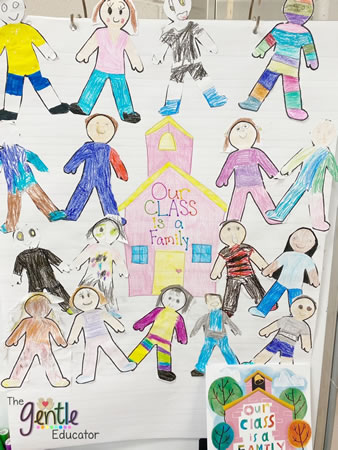Hey teacher friends! I am thrilled that you have stumbled upon my blog and are interested in supporting your students’ social emotional development! I can tell you are already an amazing teacher for taking the time to research and read about ways to encourage your students’ mental health!
First and foremost, you should know that Gentle Educating is NOTHING EXTRA you must teach in addition to your curriculum (phew!). After the pandemic, I know many school districts are now requiring teachers to incorporate daily Social and Emotional Learning (SEL) lessons to support their students’ mental health. I am here to tell you that YOU DO NOT have to rearrange your daily schedule to fit-in time to teach about SEL.
Gentle Educating is HOW a teacher teaches; you do not have to add new curriculum or additional lesson plans to your school day.
Don’t get me wrong, I have a plethora of children’s books on character education, and I use them in my classroom all the time. Read alouds that discuss certain character education traits are GREAT, especially if you can teach a specific reading comprehension skill along with a character trait.
For example, during writing workshop, you can use the book, The Invisible Boy by Trudy Ludwig, to teach students the concept of speech bubbles but you can also have a discussion on the importance of kindness or that some students are shyer but still want to have friends. So, if you have read alouds on character education already and are using them, keep using them!
Let me start out how I came up with the concept of Gentle Educating. After becoming a new mom, I learned about gentle parenting and how I can raise my son to have a positive mental health by teaching him through patience and positive interactions instead of fear and threats.
I was raised by a generation of parents whose priority was to raise their children to follow rules and to always exhibit appropriate behaviors. My emotions and feelings were often disregarded and instead I was reminded that I should act like an obedient child. Growing up, I was anxious and shy and never expressed my feelings to anyone. I am still suffering from anxiety and shyness; however, I am working to better myself.
Now that I have a child, my husband and I agreed that we are going to raise him to feel safe enough to express his feelings to his parents without us making him feel shameful or guilty.
As I started my teaching journey and was able to observe other teachers managing their classrooms, I saw them telling their students about “the rules” of the classroom and they stressed the need for them to be followed, otherwise there would be negative consequences.
Don’t get me wrong, I know that rules are imperative when managing a classroom of 25-30 six-year-old students, however children are still human. As an adult, I don’t mind following rules if they make sense, and there is a reason WHY I must follow that rule. For example, “You are not allowed to park in the circle BECAUSE the school buses line up there”.
When I am starting the school year, I tell my students that since we have a lot of people in one room, it is important that we have rules so that everyone is safe. We discuss which kinds of rules we should have so that everyone in our classroom feels safe and won’t get hurt. I write them all down on an anchor chart and at the end, we talk about which ones are similar so we can condense them into one rule. Then we decide which ones are most important and I write them down on a new anchor chart. Once the new anchor chart is complete, the students are allowed to come up and sign the anchor chart and I hang it on a wall to remind everyone of OUR classroom rules.
This is how I start gentle educating in my classroom every school year: ensuring that my students know that their voices matter. I make sure my students know that it is THEIR classroom, not only mine, and that THEIR feelings and opinions are as important as mine. This encourages our class to feel more like a family and makes them WANT to come to school. Another great book that supports positive relationships in your classroom is Our Class is a Family by Shannon Olsen. I love reading this book in the beginning of the year! The students learn that a family is not necessarily your caregivers but people that love and care for you.
Make sure to subscribe to my newsletter to be updated with the newest blog posts, TPT sales and freebies!
I am working on an exciting FREEBIE that will be emailed to newsletter subscribers so don’t forget to subscribe!
Thanks for reading!

